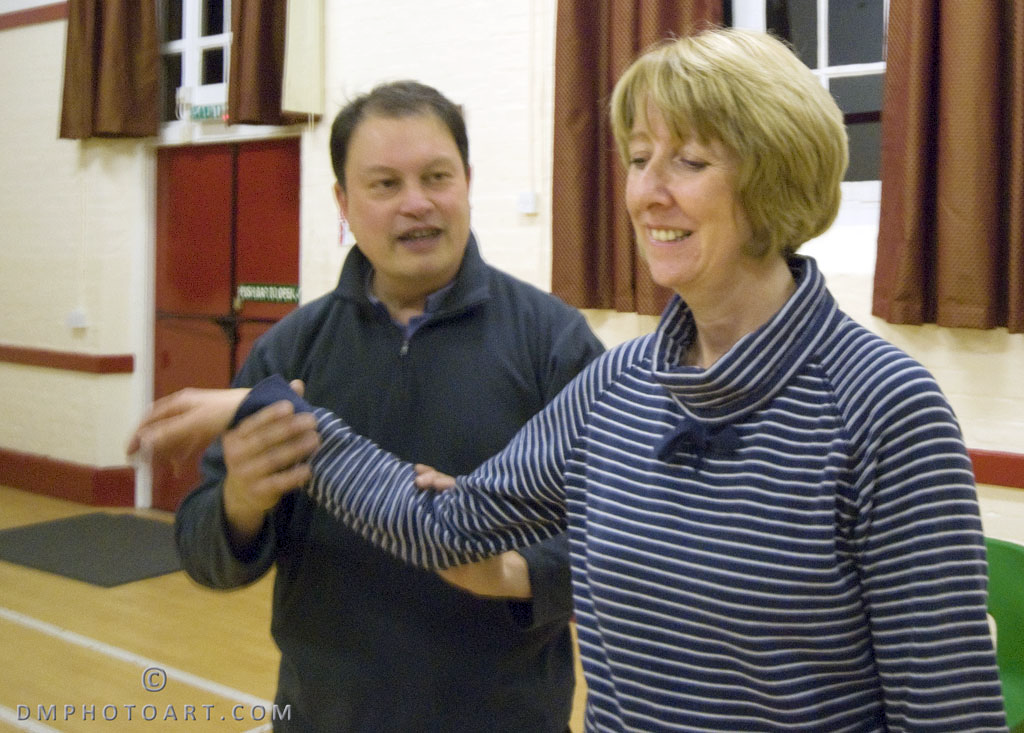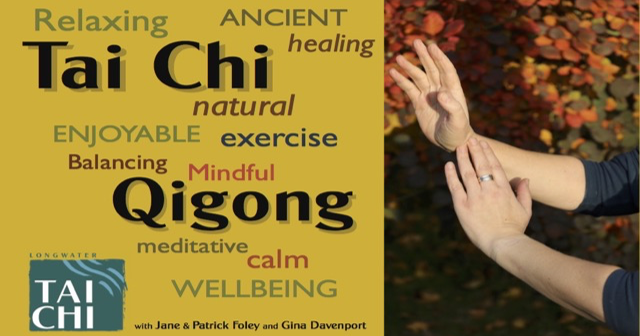Subcategories
Tai Chi Curriculum
Learning Tai Chi with Longwater
All Tai Chi (pronounced tie-jee and sometimes spelt taiji or taijiquan) styles have more in common with each other then they have differences. The key to a fine style or 'form' is that it is a good container for the deeper internal principles it was designed for, just as a fine champagne requires a strong bottle to contain it. There are 5 main styles - Yang, Wu, Chen, Sun and Combination.
A Tai Chi form can be either large, medium or small 'frame', which dictates the amount of space required to perform it as well as the actual physical extensions involved. It can also be 'short' or 'long', which simply describes the number of individual movements the form contains. Where Yang-style forms are traditionally medium to large frame and develop very high quality martial skills and qigong (pronounced chee-gong: internal subtle energy work), many of the Wu-style forms, and in particular the style Longwater Tai Chi teaches, are small frame and perfect containers for health chi gung and meditation. That is not say these small frame forms are not good for martial arts - simply that they are more condensed and obtaining a high level of skill requires greater dedication.
Longwater Tai Chi teachers Jane and Patrick Foley have over 60 years experience between them in studying and teaching various forms, including Chen, Wu, Yang and Sun styles studied with top quality masters like Bruce Frantzis, Sam Masich and Dr Paul Lam. Longwater teacher Gina Davenport specialises in the Sun style based forms taught by Dr Lam. However many of our students start their journey not directly studying a traditional form with us, but rather learning principles of balance and movement via our hugely popular Tai Chi Qigong Shibashi sessions.
Choosing the right approach for you is dependent on what your requirements are, but whatever you choose we will always make sure you are comfortable with the learning process, which we define in 3 distinct stages:
- Outer - Understanding the outer form - it's physical alignments and adherence to the Tai Chi principles.
- Application - Applying the structure to application - this means understanding the Tai Chi energies associated with the posture and being able to manifest them with an external connection (i.e. partner).
- Inner - Integrating neigong into the postures and movements (transitions). After much practice, you will begin to learn how to use the form to deeply relax, heal and meditate.
Qigong Curriculum
Learning Qigong with Longwater
Qigong (pronounced chee-gong also spelt chi gung or chi kung or neigong) is a form of gentle exercise practised to keep people healthy and reduce tension. Movements are repeated to softly stretch the body, increase fluid movement (blood, synovial and lymph) and build awareness.
The effectiveness of qigong to develop life force has been proven in China by its beneficial impact on the health of millions of people over thousands of years. Modern Western scientific trials back this up with clinical evidence.
When you practice and learn a qigong exercise there are both external movements and internal movements. It is these internal movements which make qigong a superior health and wellness practice and differentiate it from almost every other form of exercise in the West.
For most people, the most obvious benefit of qigong is an exercise system that actively promotes relaxation, stress relief, improved balance and flexibility and the relief or prevention of chronic health problems. The range of maladies that have been helped by qigong in China include cancer, internal organ ailments, poor circulation, nerve pain, back and joint problems and general physical disease.
Many physical problems are at least partially due to, or aggravated by, mental or emotional stress, so the importance of the inner tranquility developed through qigong cannot be overestimated. The practice of qigong helps manage the mental states that unsettle you when your chi/life force is not regulated and balanced.
Qigong is also useful on the spiritual level. Feeling the energy of your body makes it possible for you to access the energy of your thoughts and emotions, and for those who also want to explore a path of meditation this can ultimately lead to comprehending the energy of the spirit. Qigong is practiced by people of all spiritual and religious persuasions.
Meditation
Water Method Meditation
Learn to relax deeply and work with your qi (subtle life force energy) to help improve your health, calm your mind and emotions and awaken spiritual potential inside you. The material taught is 'Taoist Presence Practices' from the ancient 'Water Method' of Taoist Meditation.
Legacy Curriculum
other material we can offer you
In our long history of study and practice, we have covered many subjects with several teachers. Both Patrick and Jane are certified insructors of Bruce Frantzis' Energy Arts core neigong program. These days, the term 'neigong' is inter-changable with 'qigong', though it tends to signify a deeper more holistic approach to internal body work. These practices are for those who are serious about learning tai chi, qigong or any form of energy work. They teach the fundamentals of how to activate and harness Qi, your life-force energy, to improve health, reduce stress and generally upgrade your body and mind.
Here are some of our 'legacy curriculum' components, which you can still have access to in private or small group sessions; please contact us if you interested.
The teachers at Longwater Tai Chi primarily teach taijiquan and qigong as both a relaxing, enjoyable exercise and traditional highly structured arts. On one hand, the slow, meditative movements for tai chi and qigong forms and are practised by millions of people for their proven health benefits; on the other traditional taijiquan ("supreme ultimate boxing") can provide you with robust fitness and ability to connect with others at many levels.
Our experience and breath of study goes back more than 30 years; there are several topics we are qualified to teach but currently do not hold classes for. Click on the icons above to browse a current or legacy topic, or use the slide-out menu above (![]() ). Please contact us if you need to know more or wish to follow a particular path that may require private or small group tuition.
). Please contact us if you need to know more or wish to follow a particular path that may require private or small group tuition.







